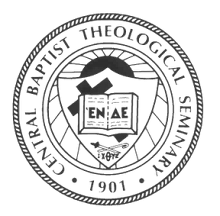I received some books for Christmas; I really needed some
more! I enjoy few things more than
curling up with a good book, and recently my new friend Ellyw (Welsh Terrier)
has joined me in that pursuit. It is a
full chair, to be sure.
Medieval
theologians urged the study of two books: The Book of Scripture and the Book of
Nature. God’s ways are disclosed in
each, they contended. The first could
reveal God’s plan in history; the second could tell of God’s handiwork and
design in all creation. Reading them
together invited more comprehensive perspective on God’s lavish engagement with
the world.
As we
approach Epiphany, we reflect on the Magi, astrologers from the East who spent
time contemplating the second book, especially the night skies. When they meet King Herod, they inquire:
“Where is he who has been born King of the Jews? For we have seen his star in
the East, and have come to worship him” (Matthew 2:2). Herod thought that job was already filled,
and his dyspepsia upset all of Jerusalem. We know that his rage and insecurity
led to the slaughter of the Holy Innocents.
Members of
the priestly and learned class of Persian or Babylonian aristocracy, these
Gentiles display an acute understanding of the larger world they inhabit. Were they also acquainted with the Book of
Scripture? Perhaps they consulted it
after their observation of a star “at its rising.” Their beliefs likely associated the birth of
a new ruler with astral portents.
Overjoyed
with they encountered the child and his other, “they opened their treasures and
presented him with gifts of gold, frankincense and of myrrh” (2:11). But first, they worshipped. In the beloved painting Adoration of the Magi by Rubens, we perceive their homage as one
kisses the foot of the Christ child even as the baby pats his bald head as a
sign of blessing. The magi also
represent the nationalities of the known world in the 17th century,
surely to indicate that Jesus is a gift for the whole of humanity.
Much has
been made of the gifts and what wise women might have brought—fresh diapers,
casseroles, cleaning supplies, and willingness to baby-sit. Perhaps there was one among the travelers
because they did stop to ask for directions.
We can imagine that these gifts proved useful as they helped finance the
Holy Family’s sojourn in Egypt.
As we
consider the meaning of the Christ child for the world, we will be wise to
notice that he often taught through the images he read through the Book of
Nature. Sparrows, seeds, and sheep all
featured in his homilies, and they served as encouragements to faith. Such reading will help us in the New Year.
Molly T.
Marshall
To learn more about Central as a formative, creative, and
progressive seminary, continue visiting
our website.
_-_Adoration_of_the_Magi_-_16th_century_Resized.jpg)


No comments:
Post a Comment